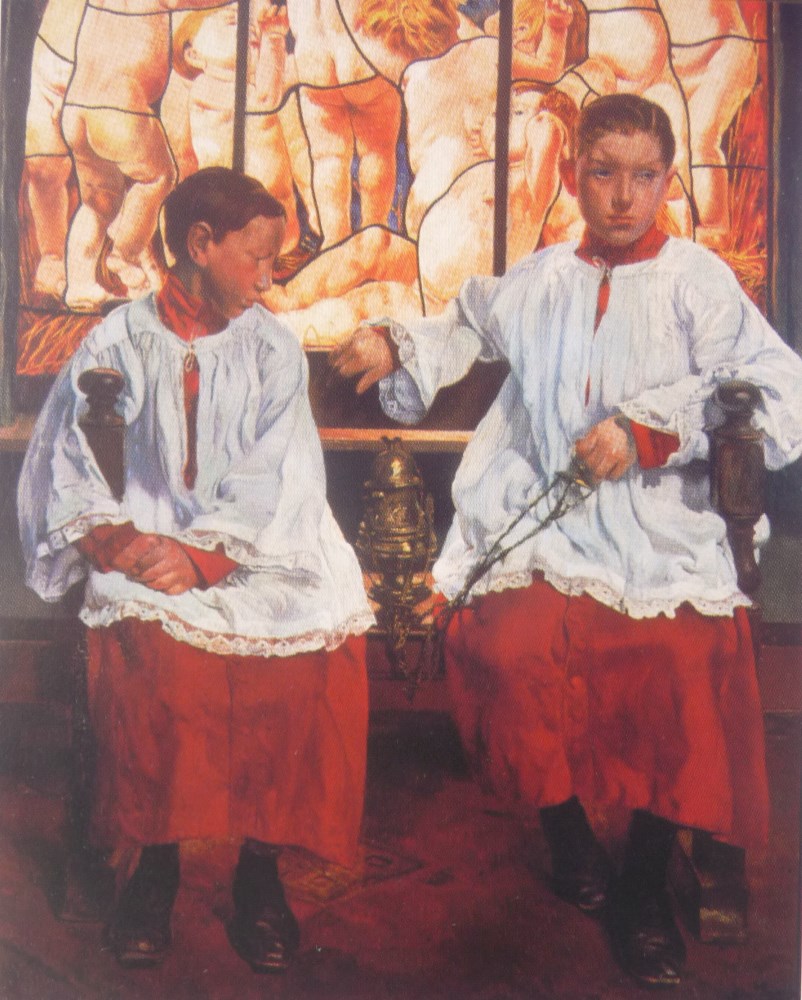Description:
Léon Fréderic (1856-1940) was one of the most characteristic and respected artists of Belgian modernism. He studied at the Académie Royale des Beaux–Arts in Brussels. From 1876 to 1878 he stayed in Italy, where he created studies based on Quattrocento paintings and painted views of cities and scenes of peasant life. After returning from England, Holland and Germany he discovered the Ardennes. They were a frequent inspiration for his large–scale allegorical–symbolic cycles with naturalistically treated figures. In the 1880s he also painted landscapes, portraits and religious paintings. His works from the 1890s, when he was in contact with the Idealists, reveal the influence of the English pre–Raphaelites.
He debuted in 1878 in Brussels, but he also exhibited at the Paris Salons, where in 1887 one of his works astonished with its revolutionary theme and daring painting solution. He was a member of the avant–garde group “L‘Essor“ and in 1893 he exhibited with innovators from the group “Les XX“. In 1896 he collaborated with the group “Art. Idealist“. At that time, in his large, already mentioned allegorical–symbolic compositions, he “expressed ideals of social harmony and unity with nature“.
Description of the painting:
The Rogalinski painting is kept in a dark, saturated palette, which the artist used from the 90s until 1914. The ministrants depicted in the painting are sitting on a bench against the background of a stained glass fragment with a group of children. Both the bench and the stained glass decorated the artist’s studio in Schaarbeek near Brussels, which he occupied from 1899. The stained glass was created in 1893 by the stained glass painter Charles Baes, based on the painting of Fréderic Earth. This is the central part of his large polyptych Len, Grain and Earth from 1887-1889, which depicts “the brief history of the fertility of the earth in the service of the basic needs of man: nutrition and clothing”. The titular Earth is depicted as a robust peasant woman who offers her breast to one of the thirteen children surrounding her, which symbolize the 12 months.
Using only the lower part of the Rogalik composition, filled with naked bodies of children, as the background for the older-aged altar boys is on one hand an allegory of the natural process of coming of age and on the other hand a transition from childlike innocence to a higher, spiritual level of consciousness that comes with an unavoidable awe which can be seen on the boys’ faces. This happens within the Catholic religion, in the “world of angels and the kingdom of God, without which life has no meaning”, as the artist believed “God, being the beginning and the end of everything, contains everything in Himself. And since everything comes from God, it must eventually return to Him.”
In the Rogalinska‘s image, the artist thus shifted the emphasis from the earthly sphere signaled by the whole stained glass, satisfying the basic needs of man, to the spiritual sphere, which gives him meaning.


